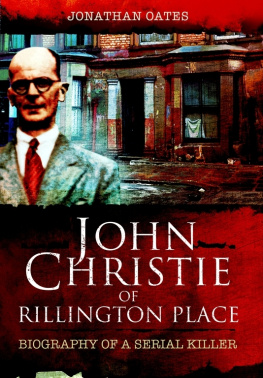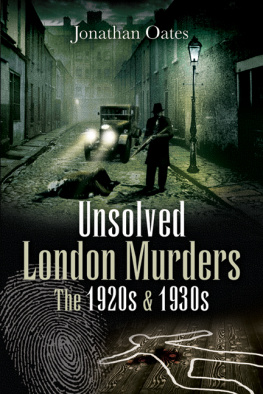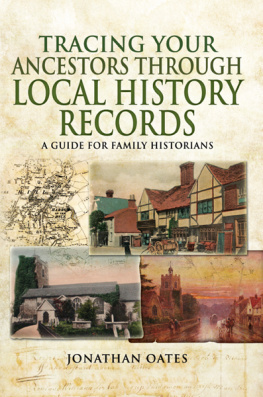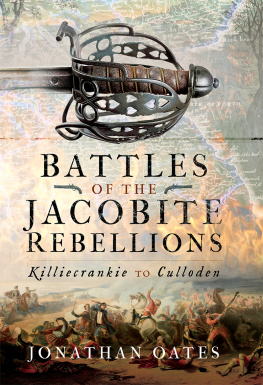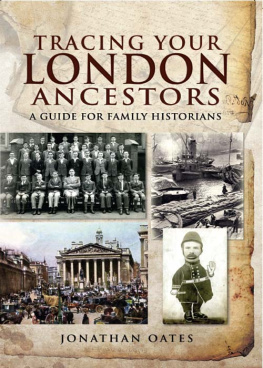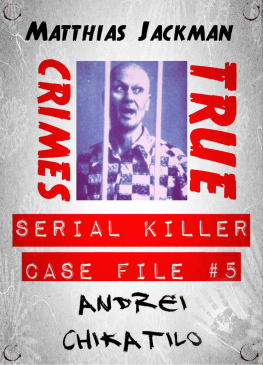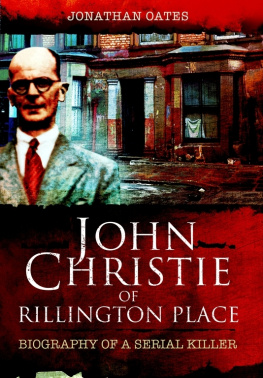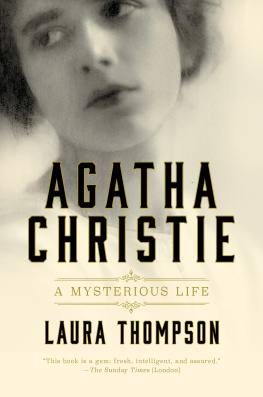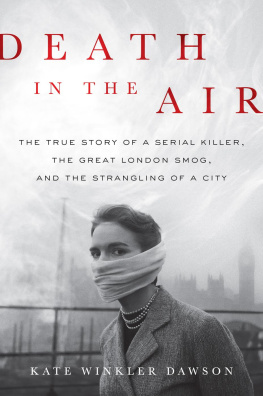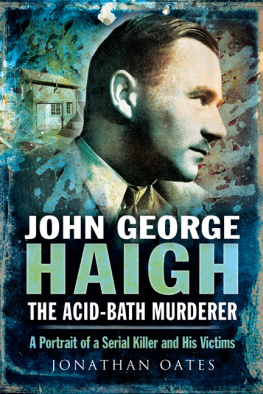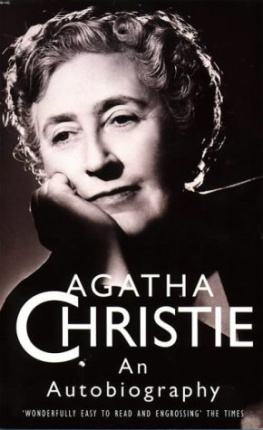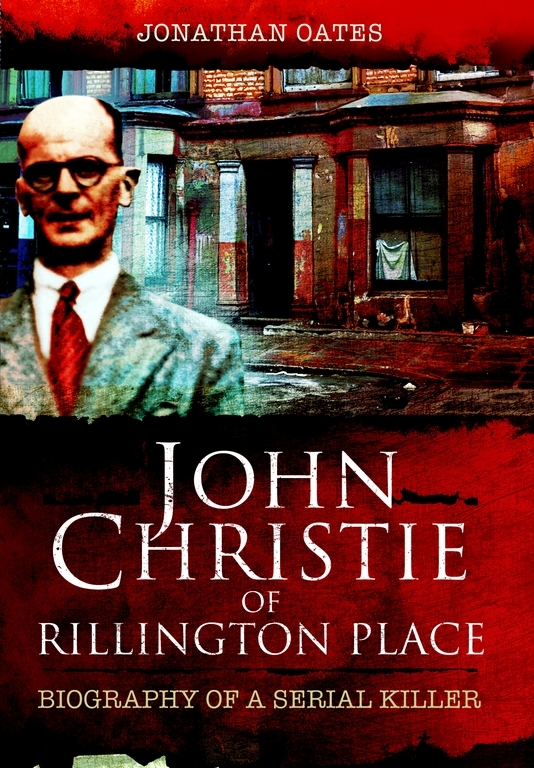I would like to thank Ian Baker, Alexander Barron, John Curnow, Jack Delves, Dr John Hargreaves, Professor David Kynaston, Paul Lang, Virginia Mason, Alice MacLennan, Robin Odell, Ken Pearce and Patricia Pichler for their help and the interest they have taken in this book. I also want to acknowledge the assistance of the staff at Calderdale Archives, Gunnersbury Cemetery, Wakefield Archives, Kensington Library, Hammersmith and Fulham Archives, Glamorgan Record Office, Southampton Library, Sheffield Library, Hull Library, the British Newspaper Library, the National Archives and at all the other archives and libraries where I have made enquiries. Finally, this book would not have been possible without the help and encouragement of Rupert Harding, the commissioning editor.
Conclusion
Most readers will, by now, have added to their knowledge of John Christie, the mild-mannered man who made a mortuary of the house in which he lived. There is, however, much that we will never know for certain. Why did Christie commit relatively minor crimes? How many victims did he claim? Why did he leave 10 Rillington Place when he did? Speculation can be offered, but there are few hard facts.
However, it seems fairly certain that he can be cleared of the murders of Beryl and Geraldine Evans. The evidence against Evans is strong indeed; that against Christie is flimsy and rests on little more than the coincidence that the two men lived in the same house at the time of the murders. Anyone believing in Christies guilt must accept a far greater number of improbabilities than this.
Although Christie did not leave corpses scattered about on public view and create a reign of terror, as did Jack the Ripper in 1888 or Jack the Stripper in 196465, he shares many characteristics with other well-known serial killers. As with Haigh, Nilsen and the Wests, he concealed his corpses and so it was only after the dreadful discovery of these that his murderous nature was known. He selected his victims carefully (as did those just mentioned), choosing people for whom enquiry would be minimal. He was able to appear normal and trustworthy enough in order to persuade them, preying on their needs, whether it be money (Fuerst), a cure for ill health (Eady) or accommodation (Maloney, Nelson and MacLennan) to return to his killing zone. He was motivated, probably, partly by power and also by the fact that he could not gain satisfaction unless having sex with an unconscious woman. Power and sex are the drives of most, although not all, serial killers. His first murder was not pre-meditated, but finding he enjoyed it, he continued to kill. He became a serial killer by accident. As with others of this ilk, he did not particularly stand out from his fellows (Im the sort of man you dont look twice at on the bus, as he said) and had few obvious worldly achievements, yet he wanted that self-esteem which he could only obtain by murder. Similarly, he was also somewhat of a loner, cut off from family, and had no close friends. He began cautiously and carefully, but became less so as the years passed and he remained unsuspected. He felt no remorse or regret for his victims, except for his wife. Like many serial killers, he left a written testament behind him, designed to create a favourable image for posterity. However, unlike most killers, he began his murders when middle-aged. To many, he is a monster. Apart from those he killed, there were families and friends left behind them, including small children in four cases, as well as an unborn baby in one or possibly two victims.
But we should also remember that he was a human being; capable of acts of murderous violence and a fit choice for the rope, but a man for all that. He was not all bad. Christie was a good scholar and volunteered when under-age for the army in the First World War, where he had a good character, as he did whilst in the RAF. He was a friend to animals and children. Before the murder of his wife, he was a good husband, inspiring love in his wife, shopping for food as well as undertaking repairs at home. At work he undertook First Aid duties and was an active trades union representative. His police work was commended. To his neighbours he was a quiet, well-dressed and respectable man, one to exchange greetings with and even to invite around at Christmas. His behaviour in public was not bizarre or threatening. In many ways he was incredibly ordinary. It is easy to point to all this as being the facade behind which Mr Hyde lurked, for a mass murderer can hardly advertise the fact. He was also prudish and puritanical concerning sex and drink. He was a boaster and a man who consorted with prostitutes. He suffered from many physical and mental ailments in the latter years of his life. Despite his intelligence, he never rose very high in the world. He suffered, too, whether from his stern father, war wounds (though he exaggerated these, they were real enough), and difficult fellow tenants in later years. Perhaps above all he was a shy man, lacking in social confidence, who lacked deep human friendships. This is not an attempt to build up sympathy for Christie, but to demonstrate that he was human.
Christie was not evil, though he was capable of evil deeds. Nor was he a sadist, as were Brady and Hindley and the Wests. Perhaps his very ordinariness makes him seem all the worse. He was, in many ways, the ordinary man, on the surface, similar to our neighbours and colleagues, who was nevertheless a mass murderer. As with all such, he was not a devil, but a man. To label him as a monster is simplistic and emotive, for Christie was just a sexual inadequate who murdered to sate his lusts. Although serial murder was an important facet of his character, it was not the whole of him.
The reader may wish to conclude with the following assessment of Christie, made by Dr Hobson (no friend of Christie), who stated:
I have never succeeded in conveying to anyone a glimmer of my understanding of the man. I have described him to many people, including Mr Ludovic Kennedy, but journalists tend to emphasise selectively, and pay comparatively little heed to observations which fit uncomfortably into their main thesis. Black and white prints more dramatic pictures than shades of grey.
I have known many bad men, but no one wholly bad. Evans and Christie alike were inadequate, insignificant little men, misfits in society, liars and boasters. Unlike Evans, Christie in addition was a self righteous prude, a moralizer, and a killer of women (perhaps more than we yet know).
He was gentle in voice and manner, and probably essentially gentle and kind in his nature. He hated cruelty in any form: there was nothing whatever of the sadist in his make up; he went to extraordinary trouble to ensure that the killings of his victims should be painless. On at least one occasion he interrupted his routine when his intended victim became frightened, and he allowed her to leave.
He was completely inadequate sexually, and I doubt whether he was ever capable of sexual relationships with women, living, dying or dead. I believe his motive for killing women was more anti-sexual than sexual, and I remain unconvinced by the evidence put forward suggesting necrophilia. He feared women and their criticism, and hated their sexuality.
He cared little for men either, though he courted their esteem, and readily excused himself on grounds of imaginary illness for falling short of the conceited image he held of himself.

